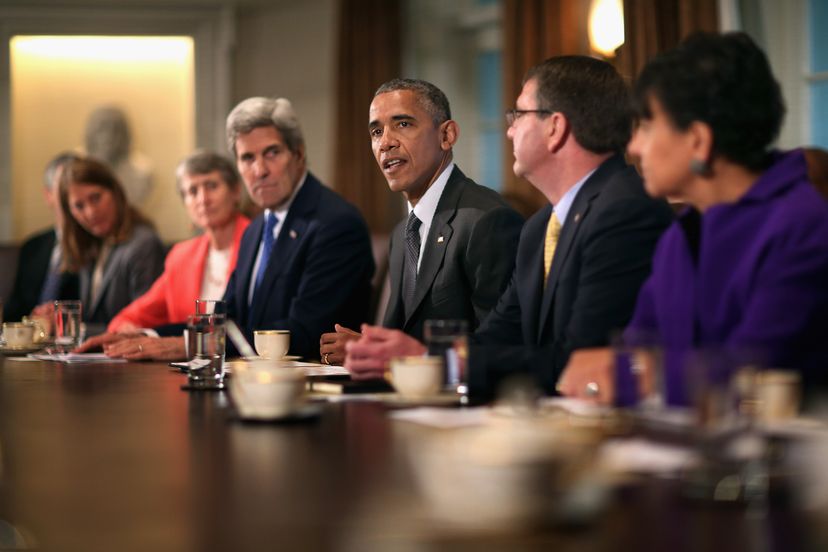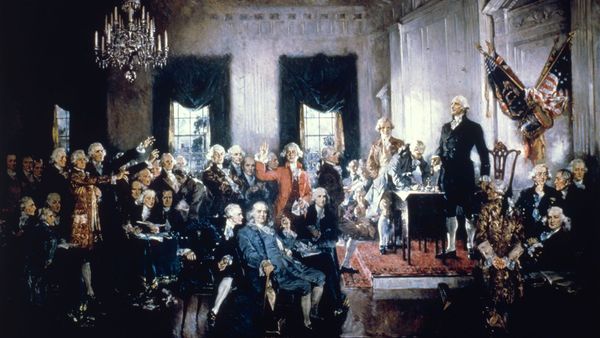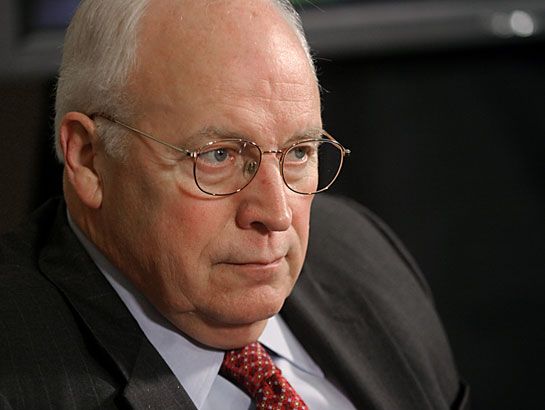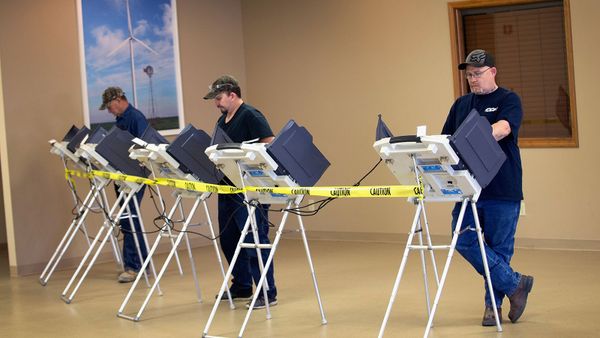
It's a potent image of the United States government at work: The president, vice president, and the secretaries of each and every major federal department seated around the same mahogany table, forging solutions to the most critical matters facing the nation and the world. This is the Cabinet, the collective seat of executive power and the engine of the American president's policy agenda.
The U.S. Constitution establishes a government composed of three branches: the Executive, Legislative and Judicial. According to Article II of the Constitution, the power of the Executive Branch is vested in the president, who is also the head of state and the Commander-in-Chief of the armed forces. While not mentioned by name, the Cabinet is established in Section 2 of Article II, which states that the president "... may require the Opinion, in writing, of the principal Officer in each of the executive Departments, upon any Subject relating to the Duties of their respective Offices ..."
Advertisement
Aside from this brief mention of "executive departments," the Constitution doesn't elaborate on department names or functions. In one of his first acts as president, George Washington asked Congress to approve the creation of the Departments of Foreign Affairs (later renamed State), Treasury and War (later named Defense) [source: WhiteHouseMuseum.gov]. Today, there are 15 executive departments. The most recent addition was the Department of Homeland Security in 2002. Each of these executive departments is responsible for administering and enforcing federal law.
The Cabinet doesn't have the authority to write or enforce laws or policy. It's simply an advisory board to the president composed of handpicked senior officials. The Cabinet includes the heads of all 15 executive departments — all called Secretaries, with the exception of the Attorney General — plus the vice president and seven "cabinet-level" officials including the administrator of the Environmental Protection Agency and the White House Chief of Staff.
Here is a full list of the departments, agencies and offices represented in the Cabinet:
- Vice President
- Department of State
- Department of the Treasury
- Department of Defense
- Department of Justice
- Department of the Interior
- Department of Agriculture
- Department of Commerce
- Department of Labor
- Department of Health and Human Services
- Department of Housing and Urban Development
- Department of Transportation
- Department of Energy
- Department of Education
- Department of Veterans Affairs
- Department of Homeland Security
Cabinet-level appointees:
- White House Chief of Staff
- Environmental Protection Agency
- Office of Management and Budget
- United States Trade Representative
- United States Ambassador to the United Nations
- Council of Economic Advisors
- Small Business Administration
Members of the Cabinet are appointed by the president and must be confirmed by the Senate by a simple majority (51 votes). The Senate has rejected fewer than two percent of Cabinet nominees since 1789 [source: Senate.gov]. The list of Cabinet posts above also represents the official order of succession to the presidency from vice president through the secretary of the Department of Homeland Security.
Now let's look at the history of the Cabinet in America.
Advertisement




